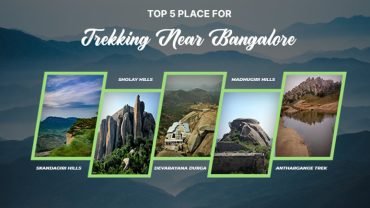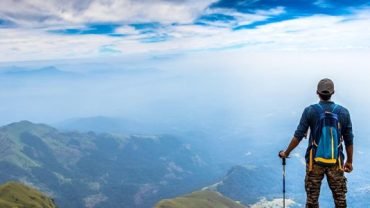Trekking during the monsoon season is often considered a double-edged sword. While the rain can make paths slippery and unpredictable, it also transforms landscapes into vibrant tapestries of green, turning the already beautiful Kudremukh into a breathtaking paradise. Nestled in the Western Ghats of Karnataka, Kudremukh offers an unparalleled trekking experience, especially during the monsoon. This guide will explore why trekking Kudremukh in the monsoon is an ultimate adventure, the challenges you might face, and tips to make the most of your journey.
Understanding Kudremukh
Kudremukh, meaning “horse face” in Kannada, gets its name from the mountain that resembles a horse’s profile. It is known for its stunning peaks, rich biodiversity, and mesmerizing landscapes. The trek to Kudremukh Peak, which stands at an elevation of 1,894 meters, offers panoramic views of the surrounding valleys and hills, making it a popular destination for trekkers and nature lovers alike.
The Monsoon Magic
Monsoon in Karnataka typically stretches from June to September, and during this period, Kudremukh undergoes a magical transformation. The rains rejuvenate the forests, bringing to life a myriad of shades of green. The hills, covered in a blanket of mist, provide a surreal backdrop for trekkers. Waterfalls become more vigorous, streams swell, and the atmosphere is filled with the earthy scent of wet soil.
Why Trek Kudremukh in Monsoon?
- Breathtaking Landscapes: The lush greenery of the Western Ghats during the monsoon is a sight to behold. The entire region becomes a vibrant palette of emerald green, dotted with colorful flowers and mist-laden valleys.
- Fewer Crowds: While summer and winter see a larger influx of tourists, monsoon trekking allows you to experience the beauty of Kudremukh with fewer people around. This makes for a more tranquil and intimate experience with nature.
- Rich Biodiversity: The Western Ghats are one of the world’s eight “hottest hotspots” of biological diversity. During the monsoon, you can encounter a variety of flora and fauna, including endemic species, exotic butterflies, and vibrant birds. Keep your eyes peeled for rare orchids and unique insects that thrive in the humid conditions.
- Refreshing Weather: The monsoon brings cooler temperatures, making the trek more comfortable. The rain also contributes to higher humidity, which can feel refreshing as you hike through the lush landscape.
- Waterfalls in Full Flow: Many waterfalls in the region become magnificent cascades during the monsoon. The sound of water rushing over rocks adds a soothing soundtrack to your trek.
Challenges of Monsoon Trekking
While the monsoon brings many advantages, it also poses certain challenges. Being prepared can make all the difference.
1. Slippery Trails
The paths can become muddy and treacherous, making footing uncertain. It’s essential to wear appropriate footwear with good grip, such as trekking shoes with deep treads.
2. Unpredictable Weather
Monsoon weather can be unpredictable, with sudden downpours and thunderstorms. Always check the weather forecast before your trek and be prepared for changing conditions.
3. Leeches and Insects
Leeches thrive in the humid environment of the Western Ghats during the monsoon. Although they are harmless, their presence can be off-putting. Using leech-repellent socks and applying insect repellent can help mitigate this issue.
4. Visibility Issues
Fog and mist can reduce visibility significantly, especially at higher altitudes. It’s essential to be cautious and ensure you have a guide or are familiar with the route.
Explore More: Anthargange cave trek | kedarkantha winter trek | chardham yatra | ooty exploration
Preparing for Your Trek
To ensure a safe and enjoyable experience, consider the following tips:
1. Choose the Right Time
While monsoon lasts from June to September, the best months for trekking Kudremukh are July and August. During this time, the rainfall is substantial, enhancing the beauty of the landscape. However, always check local conditions and advisories.
2. Pack Wisely
Essential Packing List:
- Clothing: Wear quick-drying, moisture-wicking fabrics. Layering is key; a breathable base layer, an insulating mid-layer, and a waterproof outer layer will keep you comfortable.
- Footwear: Sturdy trekking shoes are a must. Consider waterproof options to keep your feet dry.
- Rain Gear: A lightweight, waterproof jacket or poncho is essential. Don’t forget waterproof pants if you expect heavy rainfall.
- Leech Protection: Wear leech-proof socks or tuck your pants into your socks to minimize the risk of leeches.
- Backpack: A waterproof backpack with sufficient capacity (around 30-40 liters) is ideal for carrying your essentials.
- Hydration: Carry a hydration bladder or water bottles. Staying hydrated is crucial, especially while trekking in humid conditions.
- Snacks: Pack high-energy snacks like nuts, energy bars, and dried fruits for quick boosts of energy.
3. Hire a Guide
Hiring a local guide is highly recommended, especially if you’re unfamiliar with the terrain. A guide can help navigate the trails, offer insights into the local flora and fauna, and ensure safety during the trek.
4. Stay Connected
Mobile connectivity can be spotty in remote areas. Inform someone about your trekking plans and expected return time. Consider carrying a power bank for your devices.
5. Respect Nature
Practice responsible trekking by following the “Leave No Trace” principles. Carry out all waste, avoid disturbing wildlife, and stick to established trails.
The Trekking Experience
Starting the Trek
The trek to Kudremukh typically starts from the base at Mullodi village. The initial part of the trek involves a steep ascent through dense forests. The sounds of chirping birds and rustling leaves accompany you as you make your way up.
Scenic Stops
Make sure to take breaks at scenic viewpoints. The panoramic views of the valleys and mountains are breathtaking, especially when shrouded in mist. Capture the moments with your camera, but also take the time to simply enjoy the beauty around you.
Reaching the Peak
As you approach Kudremukh Peak, the trail can get steeper and more challenging. The mist adds an element of mystery, and the exhilaration of reaching the summit is unparalleled. Once at the peak, you’ll be rewarded with stunning views of the surrounding mountains and valleys.
Enjoying the Falls
After summiting, many trekkers continue to Bandaje Falls, which is usually a short hike away. The sound of the cascading water provides a perfect backdrop for a well-deserved rest. Enjoy a picnic near the falls, soak in the beauty, and maybe even take a refreshing dip in the pool below.
Conclusion
Trekking Kudremukh during the monsoon is a truly enchanting experience that brings you closer to nature. The vibrant greenery, the soothing sound of rain, and the breathtaking landscapes create a magical atmosphere that makes every step worthwhile.
While the challenges of monsoon trekking should not be underestimated, proper preparation and respect for the environment can ensure a rewarding adventure. So gear up, embrace the rain, and set out on a journey that promises to be as unforgettable as it is beautiful. Whether you’re a seasoned trekker or a novice explorer, the lush greenery of Kudremukh in monsoon awaits you! Happy trekking!




Comment (0)